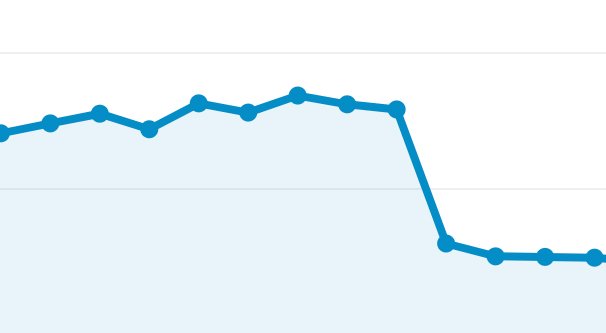
Isn’t it true that one of the most essential aims of most marketers is to increase website traffic in order to generate more company leads? And this is critical for your company’s success. Because it’s pointless to create a website and then wait for people to visit it. You must advertise your website to boost traffic, which will result in more leads and higher conversion rates.
However, how may a website’s traffic be increased? SEO, paid advertising (PPC), blogging, social media marketing, and other methods are all used to generate visitors to your website. In this post, we’ll go through how to use referral traffic to boost your website’s traffic.
We will define referral traffic, explain why it is essential, how to see referral traffic, and discuss the best strategies to increase referral traffic to your website. Referral traffic gives up a plethora of avenues for diverting visitors from other domains to your website. If done correctly, there are virtually no limits to the number of recommendations you may receive.
Understanding Referral Traffic for Website

The number of people who visit a website is referred to as its traffic. The number of individuals who visit a website is determined by the website’s purpose, the users’ personal goals, and how they discovered the site. The importance of traffic in determining the success of a website cannot be overstated. Understanding website traffic and discovering strategies to enhance it is critical for businesses and organizations to maintain constant development.
There are roughly five types of traffic for a website
- Direct Traffic – When people put your website’s precise URL into the address box.
- Organic/Search Traffic – This is search-based traffic obtained through a well-designed SEO plan. This involves keyword research, creating original material, and others.
- Referral Traffic – When a person accesses your website via a link on some other website.
- Social Traffic – Organic marketing on social media platforms generates this traffic. It is not the same as sponsored traffic because no financial commitment is required.
- Paid Traffic – It is the inverse of organic/search traffic. You must pay for your website’s advertisements and have total control over the type of audience you want to target.
This post will concentrate on referral traffic. Referral traffic is defined as traffic that comes to your website from sources other than major search engines. Other blogs, social media, directories, forums, emails, push alerts, and so on are examples of these sources.
The most significant referral marketing channel is social media. Almost 90% of marketers think that social media has given their companies a lot of exposure. Unlike any other digital marketing endeavor, social media marketing trends increase online traffic.
Referrals in Website Traffic

Referral traffic is crucial for your website since it delivers potential customers to your site from other sites that may have the same target audience as yours, and consumers already trust their recommendations. By reviewing the list of referrals, you can better understand the interests of consumers coming from those sites and what they are often reading, improve your content for them, and convert those users into customers.
According to recent marketing data, 83% of marketers consider social media to be an important marketing tool for their company. Choose to be active on social media networks if you want more referral traffic to your site.
The following are some prominent social bookmarking networks that any publishers may utilize to get referrals:
- Pinterest
According to recent studies, Pinterest is more effective than Twitter in driving referral traffic. Pinterest might play a significant role in your referral marketing campaign. Start pinning your material and infographics after learning from others who are doing it right on Pinterest. - Reddit
In April of 2020, Reddit was recorded to have 1.54 billion users. Reddit offers subreddits for almost any topic imaginable, and a quick Google search will lead you to the communities you’re looking for. If your content makes it to the first page, your website is likely to acquire a large quantity of referral traffic. - Quora
Quora has the benefit of doing exceptionally well on Google search results pages. If your answer, along with a link, to a specific topic, reaches the top of a page that receives consistent traffic, the referral traffic you receive will be quite consistent. - Flipboard
Since its debut, Flipboard has been a popular news-aggregation website. Many publishers strive to have their websites included on Flipboard by submitting an application. If you create a plan to get featured on Flipboard, you may earn a lot of referral traffic. - Google News Initiative
Google News Initiative, the most prominent news aggregator, provides a platform for publishers to gain recurrent traffic on their websites. For its News Initiative, Google offers a Publisher Center that assists publications is not just appearing on the website but also gaining significant prominence.
Increase your Referral Domain

These tips may help you improve the effectiveness of your referral marketing and lead generation efforts:
- Taking advantage of social media: Building a social media presence might be time demanding, but it is extremely rewarding. In a variety of ways, the work you put in results in referral traffic and higher search engine rankings. You must be persistent on social media and maintain high engagement rates in order to maintain a steady flow of referrals. Referrals from people’s social media pages – and, eventually, their websites – may account for a significant portion of your referral traffic in the age of influencers and micro-influencers.
- Start affiliate program: Product owners utilize affiliate programs to compensate publishers financially in return for recommending new consumers. Affiliates aren’t always genuine clients of the goods or services. Affiliate marketing has become one of the most reliable methods of driving visitors to a website, and there are now plug-ins for your website that may help you keep track of your affiliate program. Start an affiliate program to take advantage of someone else’s following and utilize it to boost referral traffic.
- Start guest blogging: There might be a lot of industry specialists in your field, or there could be a lot of industry bloggers with a lot of traffic. Guest posting on their site can help your page get a lot of high-quality referral traffic. It’s ideal to stick to a regular guest writing schedule, especially if you’ve crunched the data and can determine which guest blogs bring in the most traffic. With consistent work and dedication, guest blogging is one of the proven strategies to generate referral traffic.
- List in review websites: Review websites are popular and may produce a significant amount of referral traffic. They provide your product straight to your target market. Excellent customer feedback will promote new sales and recommendations to your business. When trying to be included on review websites, check for your competitors’ products and make a list of the review directories and websites where they are featured. Before exploring additional options, you may start by being listed on these sites.
- Comment on blogs and forums: Commenting on blogs may be a wonderful method to improve referral traffic if done correctly. Instead of a one-liner to advertise your website, try to offer a thoughtful remark that adds to the debate. Visitors to a forum typically seek solutions to queries or insights into issues. If people come across your remark on a page, they may be impressed and click over to your website, indicating that the referral (link) was successful.
- Create and post infographics: Infographics are a great method to break down complex data into easy-to-understand graphs and charts. Visual content attracts attention faster and appeals to today’s customers’ short attention spans. Make your own infographics to get more attention and traffic through referrals. An infographic should aid in the communication of a complicated topic or set of instructions in a way that is easy to understand and does not overwhelm the viewer.
Tracking Referral Traffic
After having a fine understanding of the referral traffic of your website, the next issue arises regarding its boost. It is vital to track your referral traffic in order to understand its sources and trying to figure out what your returns will be after your efforts.
Google Analytics
You can view your referral traffic on the Google Analytics console. You need to simply log in to your Analytics account and look under Acquisitions<All Traffic<Referrals for data on your referral traffic. The graph may show a particular month’s worth of website visitor data for a certain website. In addition, the table will display the domain names from which traffic is produced and directed to your site, as well as crucial information on visitor interaction.
You can track the proportion of new sessions, average session time, number of pages per session, and bounce rate. Keep an eye on page per visit and average time spent on each page to determine which source is the best in terms of traffic generation. Now you can compare the figures over time to see whether your marketing activities are boosting your referral traffic or are unsuccessful. This will be an essential factor in determining your future marketing efforts.
UTM
A UTM code is a basic piece of code that may be added to the end of a URL to track the performance of campaigns and content. UTM is an abbreviation for “Urchin Traffic Monitor”. Urchin Tracker, a web analytics program that served as the foundation for Google Analytics, inspired the name. UTM allows you to track three essential parameters that are the source, medium, and campaign. UTM codes may be generated manually or using Google URL builder. A UTM code looks something like this:
UTM parameters are often part of a URL and are used to identify a specific referral campaign that drives visitors to your site. You must use Google Analytics in conjunction with Campaign URL Builder to create a unique URL for each customer who recommends. This provides criteria for tracking the source of the referral. This personalized URL may then be shared with your customer’s relatives, friends, and coworkers.
Conclusion
Most of the time it is said that organic traffic is the most effective approach to increase the popularity of your website. However, this cannot be said about all publishers. Some publishers can boost their website’s rating and traffic by developing a backlinking strategy. Referral traffic, when done correctly, may be an advantage to all publishers, regardless of the brand’s target audience.
It takes time to get referral traffic, but if you’re patient and follow the tips above, you should be successful. Expect to work hard for a long time, and don’t expect to see results right away. Make sure the material you generate is of the greatest quality, whether it’s a guest blog, a social media post, or an infographic. Consumers are more discerning than ever before, and high-quality content will always prevail.
